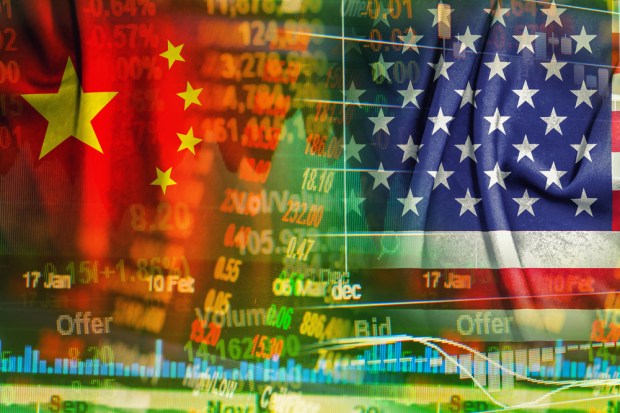Trade Wars, IP Wars, And Who Wins Between China And US?

It’s earnings season, which leads us to mull the fate of companies large and small, and of industries that are global in scope.
Granted, we’re only a week in. And granted, most everyone looks at the marquee names. The banks have seen some stickiness in the consumer’s propensity to spend. Trading volumes are up, too – the Wall Street kind.
You hear, or read, the words “trading volumes” – and the mind casts back to headlines that are on trade of a different sort. The trading volumes that cross borders, of course – or lack thereof.
Where the trade war comes into play for tech firms and for payments firms is where the weaponry goes beyond tariffs and extends into the non-tangible realm – tied to intellectual property, that is.
The latest salvo in the trade war has been one that has seen Donald Trump state that tariffs may come on $500 billion of Chinese goods, which is essentially … everything. That runs the gamut from edibles to electronics.
The playing field is an uneven one, as China imports much less from the U.S., so the impact cannot be one that sees an escalation where we levy tariffs, China does for a commensurate amount, and then eventually someone cries “uncle” and we all go to the negotiating table (again).
The U.S. approach has been rather quick. The Trump administration announced tariffs on the first tranche of Chinese products, $34 billion worth, with 25 percent tariffs. Then came $200 billion worth of goods the following week, with a relatively smaller percentage levied, at 10 percent. Now it seems that everything is on the table.
This all comes as China has a lot of financial risk tied to debt that is out in the field – as much as $1.9 trillion. At the same time, the country has instructed its lenders to stir small business lending by keeping a close watch, and lid, on interest rates. The implication here is that the government needs to make sure demand is in place, both internally and externally, to keep the economy afloat. Thus: Might they blink? Might they concede to lessening the trade imbalance?
It’s a risky gamble for the Trump administration, and one that may presage the trade war extending well beyond the confines of tangible items such as soybeans and pork.
What else can the Chinese do to wage economic battle, given the fact that it imports only about $130 billion in U.S. goods? Plenty, it seems, beyond the confines of matching tariff for tariff. Firms like Facebook and Google want in on the vast market that is China’s. The dictates that exist to give permission to enter that coveted market are strict ones. Consider that Apple had to relocate some of its data storage to the region. Consider, too, that Amazon’s China-based operations are controlled by companies there.
The key is to satisfy local licensing mandates. In a trade war, then, China can do a few things. It can make the restrictions even tighter, or can ban firms from entering in the first place – and can even rouse citizens to boycott U.S. firms’ goods and services. These arrows in the quiver may be leverage enough to blunt U.S.-imposed tariffs, not all of which have concrete timelines. Qualcomm is still waiting for the go-ahead from China to complete its $40 billion buy of NXP. The deadline is this week – might it be dashed on the rocky shoals of the trade war?
Financial publications have stated that China is mulling delaying such approvals, even though the chip deal had won approval through at least part of the Chinese process. The deal may hinge less on the merits of that individual tie-up than the trade volleys – and even the ways ZTE may or may not emerge from recent decisions by the U.S. government to ease penalties related to past sanctions.
Retaliate for the retaliation and the slope becomes slippery, with no telling where it may stop.
